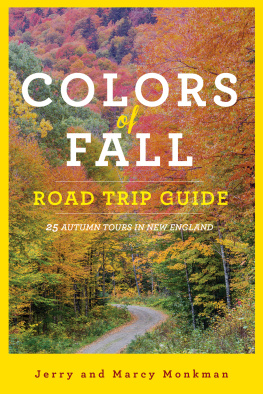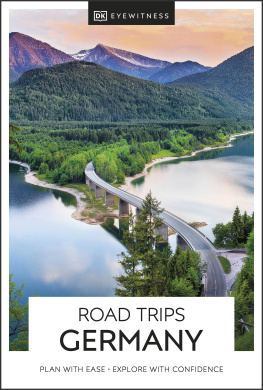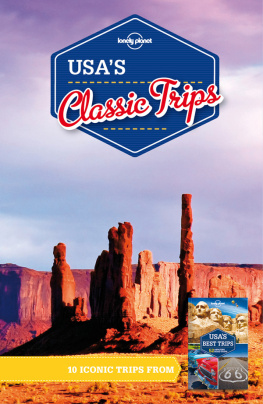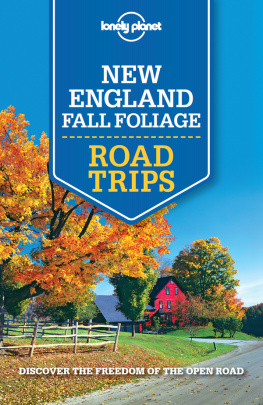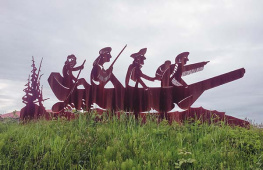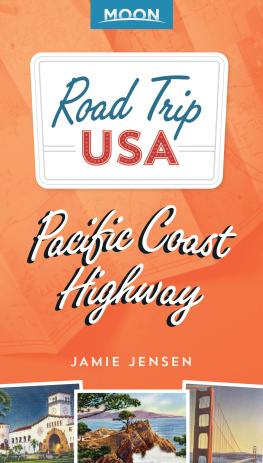

Copyright 2017 and 2010 by Jerry and Marcy Monkman
Maps by Paul Woodward, The Countryman Press
Maps on by Adrian Kitzinger, The Countryman Press
All rights reserved
For information about permission to reproduce selections from this book, write to Permissions, The Countryman Press, 500 Fifth Avenue, New York, NY 10110
For information about special discounts for bulk purchases, please contact
W. W. Norton Special Sales at specialsales@wwnorton.com or 800-233-4830
Book design by Anna Reich
Production manager: Devon Zahn
Cover design by Anthony Morais
Cover photograph Jerry and Marcy Monkman / EcoPhotography
The Countryman Press
www.countrymanpress.com
A division of W. W. Norton & Company, Inc.
500 Fifth Avenue, New York, NY 10110
www.wwnorton.com
978-1-68268-138-1 (pbk.)
978-1-58157-441-8 (e-book)
CONTENTS


A sugar maple turns bright orange in Maines Acadia National Park
For those who love the outdoors and the aesthetics of rural landscapes, fall in New England is the high point of the year. The world explodes in color, and senses awaken to a rich natural variety, from cool misty forests to the warmth of sun-soaked fields and orchards. Of course, something so sublime is often fleeting, and this peak moment of our temperate weather cycle is short, lasting a few weeks at most before cold and snow quiet the forests, fields, and village centers. We have been reveling in and photographing fall in New England since we moved here from the Midwest more than twenty years ago. Despite these twenty-plus years of immersing ourselves in the autumn landscape, we continue to be excited every year by the prospect of creating new images that capture the essence of the regions beauty and convey the meaning of the changing colors of its maples, birches, and oaks.
In 2003, we published a small book of photos titled The Colors of Fall , a collection of some of our favorite images of autumn in New England. This celebration of the season has proven to be popular year after year, as visitors flock to the region. Readers are always curious to know exactly where we took our photos. Their questions inspired this book. In writing it, we revisited favorite places and traveled to new destinations that had been on our to-do list for years. We admit that this was a pretty great job to have for a couple of months, and we wish you as much enjoyment as you use this guide in charting your own fall foliage travels.
THE NEW ENGLAND FOLIAGE SEASON: WHAT TO EXPECT
Timing. Climate change in New England is impacting the timing of fall foliage, making it more difficult to predict peak foliage times in advance. Fall colors are triggered not only by waning sunlight in the fall, but by cold temperatures, and to a lesser extent, the amount of precipitation the region receives over the course of the year. Because climate change is impacting both temperature and precipitation patterns, it is changing the timing of foliage in some years, primarily so that it is a week or two later than normal. Columbus Day weekend in October is the traditional peak weekend for leaf peeping. Visitors are pretty much guaranteed there will be peak color somewhere in New England at this time, but exactly where is anyones guess. In general, leaves start turning first in the hills and mountains of northern New England in late September, peaking around the first week of October, with the color gradually moving south and toward the coast throughout the month. Higher elevations peak before lower elevations, with the exception of freshwater wetlands dominated by red maples. By November 1, the show is over in all but the warmest pockets of coastal oak-hickory forests. To help you plan your visit, we have listed the typical peak foliage time at the beginning of each trip description.
Color. The fall foliage for which New England is famous is found in the hardwood forests of northern New England and in the hills of western Massachusetts. These forests are dominated by sugar maples, American beech, and yellow birch, which combine to make a beautiful mix of orange, yellow, and bronze colors. The occasional red maple adds the splashes of red that get people really excited, although depending on weather and soil conditions, sugar maples will turn red as well.
At higher mountain elevations, the forest is dominated by paper birch trees, which turn a brilliant yellow and are usually complemented by the dark greens of spruce and fir trees. In southern and coastal areas, you will still find pockets of northern hardwoods, but oak-hickory forests are more dominant. The color displayed in these forests is less gaudy than up north, being primarily yellow and russet, with some of the oaks turning red in good foliage years. Also, dont overlook the color in the coastal salt marshes. As the salt hay turns from green to brown, it can take on varying shades of brown, red, and gold, offering vistas that are just as visually pleasing as the bigger forest displays.
Weather. Fall is a time of change, and that obviously applies to the weather as well. Average daytime temperatures are in the 50s and 60s (Fahrenheit), but it is just as common to have days in the 40s or 70s. Night can bring temperatures as low as the 20s, especially in northern New England. Rain, fog, and drizzle are common throughout the fall season, and snow is possible as well, even in early October. However, sunny days are also typical. Basically, you need to be prepared for just about any weather.
Lodging. This guide does not include lodging suggestions, but we can make one observation that holds true year after year: Expect lodging rates to be as high or higher in the fall than at any other time of the year, as foliage season is one of the most popular times to visit the region. Rates at some hotels are a little lower during the week, but if you plan on visiting during a weekend, make advance reservations and plan to pay a premium. Campground reservations should be made well ahead of time for a fall weekend visit. If you are traveling after Columbus Day, be advised that some establishments in the region shut down for the winter months; call ahead when making travel plans.
Traffic. In general, you will rarely encounter traffic problems if your leaf-peeping excursions take place on weekdays. However, certain routes can get very busy during fall weekends. In particular, you can expect a lot of company during peak weekends on the Kancamagus Highway (Trip 8), VT 100 in the Green Mountains (Trip 10), and the Park Loop Road in Acadia National Park (Trip 24).
USING THIS GUIDE
The 27 trips included in this book range in length from an 18-mile drive through Vermonts Smugglers Notch to a 145-mile journey in Maines North Woods. Where relevant, trip descriptions will alert readers to unpaved or gravel roads, but in general, all of the driving routes mentioned herein are accessible to passenger vehicles. In general, travelers will end up spending half a day to a full day exploring each route. The trips outlined here are intended as suggestions. Each offers an excellent way to spend a day enjoying the fall colors. Travelers are expected to make their own adaptations, according to personal interests.
Next page
